“Barbecue Bob’s Barbecue Sauce”
If you’ve ever met my friend “Barbecue Bob,” you’d know two things: he’s never short on opinions about barbecue, and he swears his homemade sauce could make an old boot taste good.
Over the years, Bob has fine-tuned this simple, no-nonsense recipe that hits all the right notes—sweet, tangy, with just enough heat to keep things interesting.
What’s in it? Nothing fancy: just onions, celery, ketchup, cider vinegar, sugar, and a pinch (okay, maybe a hefty shake) of cayenne pepper.
No secret ingredients, no mysterious spice blends—just good old-fashioned flavor. Bob says the celery is the unsung hero, adding a subtle depth that’ll have folks wondering what your secret is.
Best of all, this sauce comes together in a single pot with ingredients you probably already have in your kitchen. It’s perfect for slathering on ribs, basting chicken, or even giving grilled veggies a little attitude.
Bob likes to say, “If you’re not licking your fingers, you’re doing it wrong.”
So grab a saucepan and let’s channel a little Barbecue Bob—because great barbecue isn’t about perfection but passion (and plenty of napkins).
Homemade Barbecue Sauce
Ingredients
- 2 tablespoons vegetable oil or canola oil
- 1 yellow onion finely chopped
- 1 celery stick finely chopped
- 1⅓ cup ketchup
- ½ cup cider vinegar
- ½ cup water
- ¼ cup sugar
- ½ teaspoons cayenne pepper
- ½ teaspoon salt
Instructions
- Heat the oil in a medium-sized saucepan over medium-high heat. Sauté the onion and celery until the onion is translucent. Depending on your stove and pan, 5 to 8 minutes.
- Add the rest of the ingredients, whisk or stir together, and bring to a boil.
- Cover, reduce the heat to low, and simmer until the sauce is the desired thickness. This can take up to 15 minutes or more.
- When done, remove from the heat and let cool. If you are not using all the sauce for one meal, remove what you will use so you don't contaminate the unused portion.
Key Components
Whether brushed onto ribs, slathered on chicken wings, or drizzled over pulled pork sandwiches, barbecue sauce elevates the taste of grilled and smoked foods, making them a delicious and satisfying indulgence for barbecue enthusiasts worldwide.
Component | Description | Examples of Ingredients |
| Sweetness | Balances acidity and provides caramelized notes. | Brown sugar, molasses, honey, maple syrup, fruit preserves |
| Acidity | Brightens flavor and balances sweetness. | Cider vinegar, white vinegar, lemon juice, lime juice, tomato paste |
| Spices | Adds depth, complexity, and heat. | Garlic powder, onion powder, paprika, chili powder, cayenne pepper, black pepper, mustard powder |
| Smokiness | Mimics flavors of traditional barbecue. | Liquid smoke, smoked paprika, chipotle peppers, smoked salt |
| Texture | Determines how sauce coats and clings. | Adjusted with water, stock, pureed vegetables, reduction time |
| Umami | Adds savory depth and richness. | Worcestershire sauce, soy sauce, tamari, fish sauce, anchovy paste |
| Fruitiness | Contributes brightness and unique flavor. | Pineapple juice, peach puree, apple cider, mango puree, apricot jam |
| Heat (Separate from spice) | Controls the sauce’s heat level. | Hot sauce, fresh chilies, chili paste, Sriracha |
| Color | Enhances visual appeal. | Tomato paste, paprika, caramelized sugars, molasses |
Barbecue Sauce
Barbecue sauce is a popular condiment and marinade used to flavor and enhance grilled and smoked meats, particularly in American cuisine. This versatile sauce comes in many regional variations, each with its unique blend of ingredients and flavor profiles, ranging from sweet and tangy to spicy and smoky.
The origins can be traced back to the early American colonists, who combined their traditional European sauces with the ingredients available in the New World. Over time, different regions developed their distinctive styles of barbecue sauce, influenced by local tastes and ingredients.
One of the most well-known styles is the Kansas City version, characterized by its thick, tomato-based consistency and sweet, tangy flavor. This style often includes molasses, brown sugar, vinegar, and various spices, creating a rich and complex sauce that pairs well with a wide range of meats.
In contrast, Carolina-style barbecue sauce is typically thinner and more vinegar-based, with a sharp, tangy flavor. There are two main types within this style: the Eastern Carolina sauce, which is primarily vinegar and pepper, and the Western Carolina or Piedmont sauce, which includes a touch of tomato for added sweetness.
Memphis style is another popular variety known for its balanced combination of sweet, tangy, and spicy flavors. This style often uses tomato and vinegar as a base, adding mustard, Worcestershire sauce, and a blend of spices to create a robust and flavorful sauce.
On the other hand, Texas barbecue sauce tends to be thinner and spicier, with a strong emphasis on the meat’s natural flavors. This sauce often includes a combination of tomato, vinegar, and a generous amount of chili peppers or hot sauce, resulting in a bold and fiery flavor.
Barbecue sauce is a finishing glaze, marinade, and dipping sauce. Its versatility makes it a staple in American barbecue culture, enhancing the flavor of ribs, chicken, pork, and vegetables. Whether you prefer it sweet, tangy, spicy, or smoky, there is one to suit every palate and culinary preference.



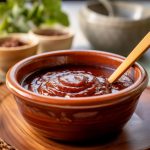
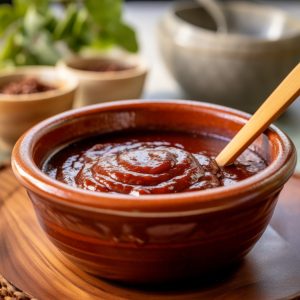
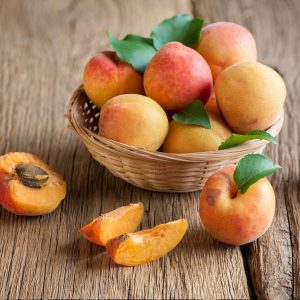

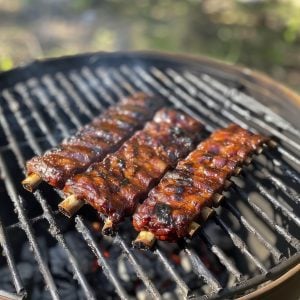
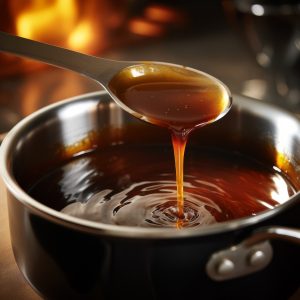

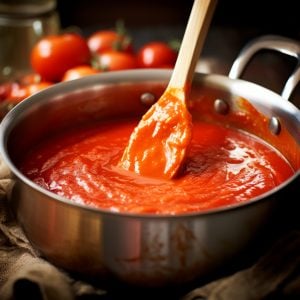
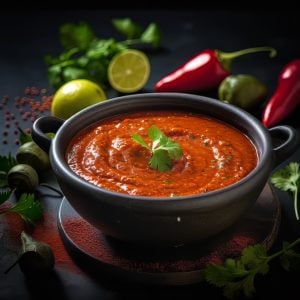


2 Responses
These is good and professional big time.Tried it and had my guests wondering how in earth food can be so made lovely, taste not forgettable but always there when u think of the food.
Thanks Chef, I’ll tell Barbecue Bob. – RG